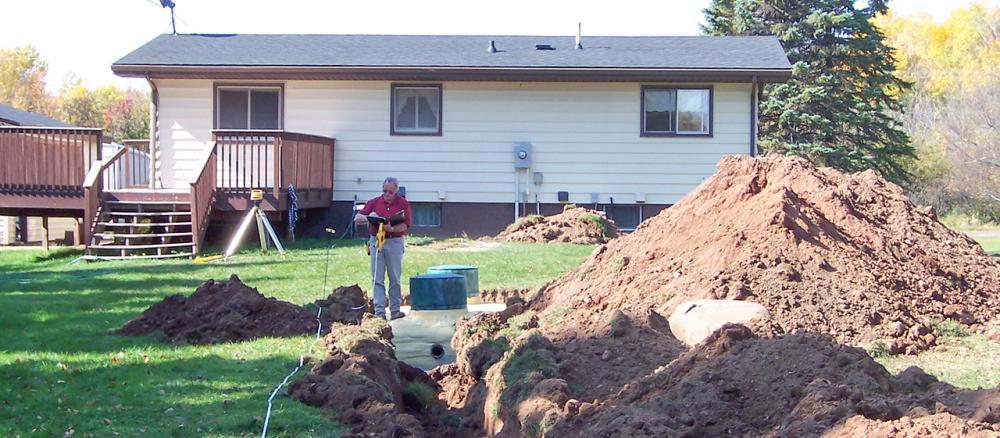Minnesotans whose homes are connected to municipal wastewater services may not be aware of the role of septic systems in protecting water quality in the state. More than 618,000 Minnesota homes and businesses use septic systems, which treat an estimated 42.3 billion gallons of wastewater per year.
Properly installed and maintained systems are effective at treating waste and removing contaminants and pathogens from wastewater. Conversely, malfunctioning septic systems can pose a threat to both human health, if untreated waste comes to the surface, and groundwater, lakes, and streams. Harmful bacteria in many bodies of water around the state can be traced back to broken septic systems or improper sewage disposal.
Each year, the Minnesota cities, counties, and townships that administer installation permits and oversee septic system inspections report back to the MPCA on inspections conducted and permits issued. For 2020, respondents have estimated that 81% (505,300) of septic systems in Minnesota comply with applicable rules and function properly. This number has steadily increased in recent years, from an estimated 383,000 compliant systems in 2010. In addition, almost 100,000 septic-system construction permits have been issued in the past 10 years, indicating that more than 16% of Minnesota’s septic systems are less than ten years old, or have newer components.
Installing or replacing septic systems or repairing failing ones is expensive for home or business owners, who also have to pay routine maintenance expenses. Despite the challenges, local governments around the state have helped make enormous progress in improving wastewater treatment and protecting water quality.
Visit the Annual report page to learn more about the number of permits issued, inspections conducted, and septic system professionals licensed and certified in 2020. If you have a septic system at your home or business, see the Keep your septic system healthy to learn how to be septic smart.
